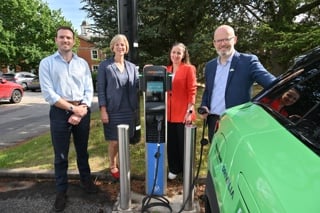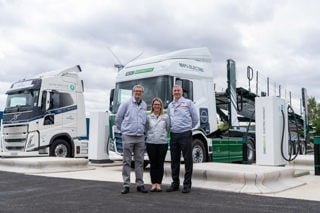Christopher Burghardt, managing director for Europe ChargePoint
It is widely accepted that in Europe at least, government-led recovery efforts in coming years will have sustainability at its core and mobility will play an important role in achieving this.
Electric vehicles (EVs) have been proven to stimulate economic growth and reduce greenhouse gas emissions.
The electric revolution is approaching at speed, with forecasts predicting that EV sales will surpass internal-combustion-engine vehicle sales by 2030, taking 51% of the market, as well as governments planning to progress bans on selling internal combustion vehicles from 2040 to 2035.
Questions have arisen since the crisis, asking whether we are ready for a fundamental change in the way we transport goods and people.
Is the British electrical grid-ready transportation electrification?
National Grid’s Future Energy Scenarios estimates that without the introduction of new technology, EVs could add 24GW to the peak demand by 2050, more than double the amount currently generated by the UK’s nuclear power stations.
Much of that technology needed to mitigate this spike is already working and ready to be implemented at scale.
The electrification of fleets provides insights into what the future grid may look like.
Even if the existing local infrastructure can support charging a fleet, many operators are installing microgrids, such as solar panels and battery systems, alongside smart chargers that can manage energy demand and distribution to support energy needs of fleets.
Distributed Energy Resources (DER) can help fleet operators avoid overtaxing the existing power grid during peak demand.
EV’s are critical to our green recovery, so why isn’t EV charging classified as Critical National Infrastructure?
EV charging suffers many of the same challenges as broadband internet requiring permission and rights to lay cables to the right locations.
The difference is that broadband is increasingly regarded as an essential utility, but EV charging is still only perceived as a ‘nice to have'.
The pandemic and recent lockdown left many EV drivers unable to access chargers on the premises of shut down businesses.
If it was designated as Critical National Infrastructure they would be legally required to stay open. The Government is currently considering this, and we encourage them to make the important change.
Is the highway charging infrastructure up to the task?
While the market deploys highway charging ahead of demand, government support is key to ensuring the continued rollout.
They are (and should be) funding the expensive aspects of highway charging – grid connections and site improvements - not subsidising operators. But the government should support the buildout on a larger scale than the £500m it has committed to date.
The industry is making significant progress expanding access to thousands of chargers by allowing drivers to ‘roam’ between EV charging networks.
For drivers, this means that with just one account, they are able to charge across Europe on a variety of network chargers by using one RFID card or app.
Roaming is another important way to support the increasing demand for EVs. Unlike the DC network, this is being done without the need for government intervention.



















Login to comment
Comments
No comments have been made yet.